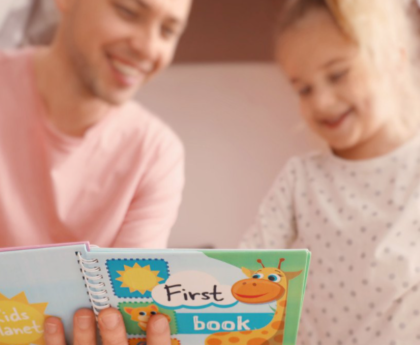When your child struggles with reading, well-meaning friends and family often offer reassurance: “Don’t worry, she’s just a late bloomer.” These comforting words suggest that with a little more time, your child will naturally catch up to peers. It’s a soothing thought—the idea that children, like flowers, simply bloom at different rates. But what does reading science actually tell us about so-called “late bloomers”? And more importantly, what should you do if your child is falling behind?
Understanding the Late Bloomer Myth
The concept of “late bloomers” in reading development has been deeply embedded in our educational thinking for decades. It’s an appealing idea that aligns with our intuition about children developing at their own pace. After all, children learn to walk and talk at different ages, so shouldn’t reading follow the same pattern?
Unfortunately, extensive research conducted over the past thirty years has consistently challenged this belief. What was once referred to as the “developmental lag” theory—the idea that some children just need more time for their reading abilities to develop—has been largely replaced by the “skill deficit” theory in reading science.
The crucial difference between these theories is their implications for intervention. The developmental lag theory suggested that difficulties would naturally fade as a child’s brain matured, making early intervention unnecessary. In contrast, the skill deficit theory indicates that waiting is counterproductive—children won’t spontaneously acquire missing reading skills without direct, intensive instruction. In fact, delaying intervention can exacerbate the problem, allowing children to fall further behind their peers.
What Research Reveals About Reading Development
Three pivotal longitudinal studies tracking children’s reading development from first grade and beyond have provided compelling evidence against the late bloomer concept. The first study, conducted by researcher Connie Juel, followed 54 children in Austin, Texas, from first through fourth grade, measuring various reading skills including phonemic awareness, decoding, word recognition, and reading comprehension.
The findings were striking: children who were poor readers at the end of first grade rarely caught up to their peers by fourth grade. In fact, the study found that if a child was a poor reader in first grade, there was an 88% probability they would remain a poor reader at the end of fourth grade. Conversely, the probability that a child with average reading skills in first grade would develop reading problems by fourth grade was only 12%.
This pattern has been confirmed repeatedly in other studies. Researcher Sally Shaywitz and her team tracked 445 Connecticut students identified as poor readers in first grade and found that these students continued to struggle with reading through high school. The pattern held true regardless of language—similar results emerged from a study of nearly 500 German-speaking children in Vienna, where reading difficulties in second grade persisted through eighth grade.
The research is definitive: without targeted intervention, poor readers remain poor readers. The concept of the reading “late bloomer” is more myth than reality.
Why Children Struggle with Reading
If waiting doesn’t work, what should parents do instead? The answer begins with understanding why some children struggle with reading in the first place.
Early reading difficulties typically signal that a child is missing specific foundational skills needed for successful reading, particularly in the area of decoding. When children fall behind in kindergarten or first grade—crucial years for reading development—they’re often lacking essential skills that their peers have already mastered.
Juel’s research identified phonemic awareness as a critical missing component among struggling readers. The poor readers in her study entered first grade with limited phonemic awareness and didn’t fully develop this skill until the end of third grade, two years after their more successful peers.
This finding aligns perfectly with the Science of Reading, which emphasizes five essential components for reading success:
- Phonemic awareness – the ability to identify and manipulate individual sounds in spoken words
- Phonics – understanding the relationship between letters and sounds
- Fluency – reading with accuracy, appropriate speed, and expression
- Vocabulary – understanding the meaning of words
- Comprehension – making sense of what is read
When children struggle with reading, they’re typically missing one or more of these fundamental building blocks, most commonly in the areas of phonemic awareness and phonics. These aren’t skills that develop naturally with time—they require explicit, systematic instruction.
Early Intervention: The Key to Reading Success
Rather than waiting for your child to “bloom,” research suggests that early, targeted intervention is the most effective approach. As Sally Shaywitz’s research demonstrated, without specific help addressing their needs, struggling readers don’t catch up. Simply doing more of the same instruction that has already failed isn’t effective—these children need a different approach tailored to their specific challenges.
The good news is that appropriate early intervention can make a tremendous difference. The skill gap between average and below-average readers can be largely closed with the right kind of support.
Effective reading intervention should:
- Be provided as soon as struggles are identified
- Focus on the specific skills the child is missing
- Use explicit, systematic instruction
- Provide ample practice opportunities
- Be delivered with sufficient intensity and duration
- Monitor progress regularly to ensure effectiveness
Remember that every child’s reading journey is unique, even if the developmental patterns of reading acquisition follow predictable paths. While the research clearly shows that waiting rarely works, this doesn’t mean there’s a one-size-fits-all timeline for reading development. The goal isn’t to push children beyond their capabilities but to provide the right support at the right time to help them develop essential reading skills.
Support Your Struggling Reader
If your child is showing signs of reading difficulties, here are practical steps you can take:
- Don’t wait – Research shows that nearly half of parents wait at least a year before seeking help for struggling readers. Don’t make this mistake.
- Assess the specific skills your child needs – Work with teachers to identify exactly which reading components are challenging for your child. Is it phonemic awareness? Phonics? Fluency?
- Find the right support – Look for programs that use a structured, systematic approach based on the Science of Reading. Effective programs focus on explicit instruction in the five essential components of reading.
- Practice consistently – Brief, regular practice sessions are more effective than occasional, longer ones. Aim for daily reading practice that includes both working on specific skills and enjoyable reading experiences.
- Celebrate progress – Notice and acknowledge improvements, however small. Building confidence is crucial for struggling readers.
- Stay positive but realistic – Maintain a supportive, encouraging attitude while recognizing that reading development requires consistent effort and appropriate instruction.
Move Forward with Evidence-Based Reading Support
Understanding the science behind reading development empowers you to make informed decisions about how to help your child. While it’s comforting to think that struggling readers will eventually catch up on their own, the research consistently shows that targeted intervention is far more effective than waiting.
The good news is that with appropriate support, most children can become successful readers. The key is identifying struggles early, understanding the specific skills your child needs to develop, and providing structured, evidence-based instruction to build those skills.
Help Every Child Become a Confident Reader
The myth of the “late bloomer” in reading has persisted because it offers comfort and reduces urgency. But what truly helps children is addressing reading challenges promptly with effective instruction.
Your child deserves the gift of reading proficiency, and with the right approach, they can achieve it. Reading isn’t a skill that develops naturally for all children—many need explicit instruction in specific components of reading. By understanding this and acting early, you’re giving your child the best chance for reading success.
Ready to support your child’s reading journey with evidence-based methods? Start your free 7-day trial of the Reading.com app today and give your child the structured, systematic approach to reading that research has proven most effective.





